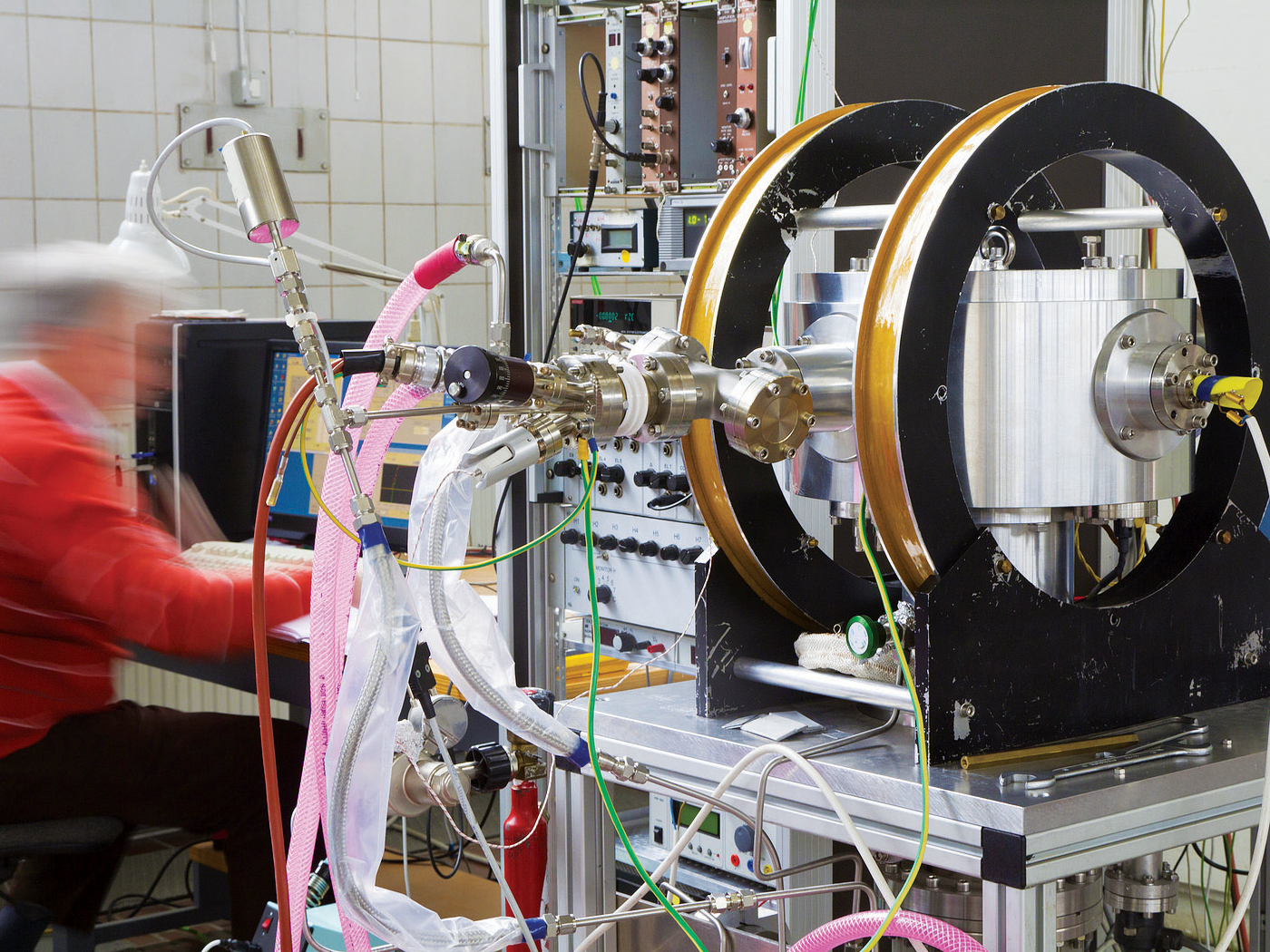In August 2005, ICR installed a highspeed research computer and gave it the name Epiphany (to reveal or show forth) to reflect its purpose in using computer modeling to explore the natural processes of our world. Since then Dr. John Baumgardner, head of the ICR computer center, has conducted research on a range of topics.
One recent Epiphany project has explored the possibility that during the year of the Genesis Flood, the mantle and crust of the earth became rotationally unstable and rotated a few dozen times about an axis perpendicular to the earth's spin axis. (The earth's dense core, because the liquid outer core is only weakly coupled to the mantle, would not have participated in this auxiliary rotation.) The earth's rotation is described by the same equations that describe the motions of a gyroscope--the so-called Euler equations.
There are two reasons that this possible rotational behavior is important to understanding the Genesis Flood. First, it results in large-amplitude tsunami-like waves that sweep over the continents, which could explain the extensive sediment layers in the portion of the geologic record associated with the Flood. Second, such rotations potentially explain the record of magnetic polarity reversals observed in lava flows on the flanks of continental volcanoes, in the alternating directions of magnetization in basaltic rocks on either side of spreading ridges on the world's seafloors, and also in the orientations of grains of magnetic minerals in sediments extracted from drill cores into the ocean bottom. If such auxiliary rotation occurred during the Flood, the alternating directions of rock magnetization would be a result of the mantle and crust rotating with respect to a magnetic field with a fixed polarity and orientation. This is in contrast to the standard understanding that the alternating directions of magnetization are a consequence of changes in polarity of the field itself via complex dynamo processes within the core. Up to now, creationist scientists have had difficulty understanding how polarity reversals in the core could take place rapidly enough to fit within the time scale of the Flood.
Dr. Baumgardner's research on this issue included writing a computer program to solve the Euler equations for a rotating body like the earth. Using plausible parameter values, this program shows that many dozens of cycles of auxiliary rotation can occur within the time span of a year, and that the temporal pattern of these cycles resembles the observed temporal changes in rock magnetization in a striking way. The computer model also provides an obvious explanation for the observation that during individual polarity reversals, the magnetic poles seemed to have moved along fixed paths, from one geographic pole to the other. These just happen to lie above a ring of cold dense rock in the upper mantle surrounding the pre-Flood supercontinent--the same ring that plays a leading role in the runaway subduction that makes catastrophic plate tectonics possible. In other words, there seems to be a consistent connection with this new phenomenon of rotational instability and previous research on the mechanism behind the Flood catastrophe.
Another computer program was applied to explore the effect that the auxiliary rotation behavior had on the ocean water during the Flood. Preliminary results show tsunami-like waves that repeatedly swept over continents at velocities of several tens of meters per second. Added features such as bottom friction and topography on top of the continents will hopefully yield new insights in the future concerning sediment and erosional patterns on the continents during the cataclysm. With your help, ICR will continue its work to provide the Christian community with a much stronger understanding of and evidence for the Genesis Flood.
* Dr. Vardiman is Professor of Atmospheric Science and Director of Research.
Cite this article: Vardiman, L. 2008. Mantle Rotation and the Flood. Acts & Facts. 37 (2): 6.




















